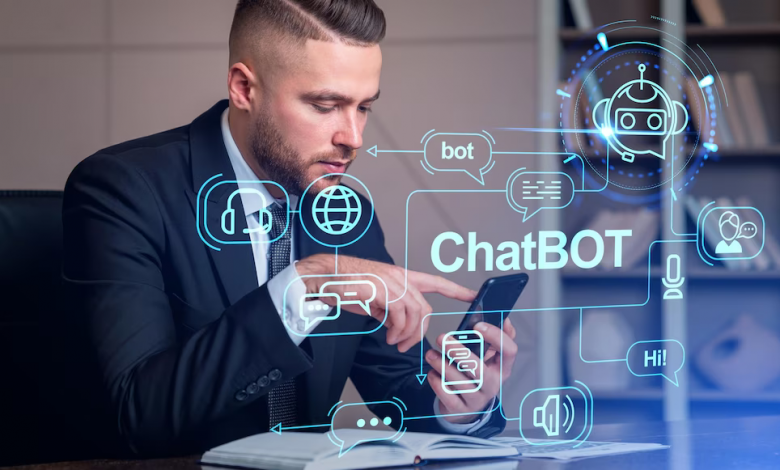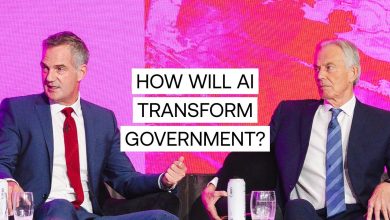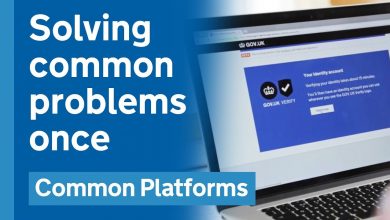Care Connect AI – Blueprint for a “No Wrong Door Chatbot”
A No Wrong Door Chatbot refers to an AI-powered conversational system designed to connect users with the appropriate support services regardless of where they initially access the system.

 “No Wrong Door” programs are initiatives designed to ensure that individuals, particularly those seeking services like mental health, substance abuse treatment, or social support, can access help regardless of which agency or entry point they contact.
“No Wrong Door” programs are initiatives designed to ensure that individuals, particularly those seeking services like mental health, substance abuse treatment, or social support, can access help regardless of which agency or entry point they contact.
It means they can “knock on any door” and still receive the right assistance without being directed to the wrong agency or department; essentially acting as a single point of entry for diverse needs, eliminating the need to navigate complex systems to find the proper help.
The core idea is to create a coordinated system where all service providers—hospitals, clinics, schools, law enforcement, or community organizations—act as entry points to a network of care. Instead of being turned away or redirected endlessly, individuals are guided to the appropriate services through streamlined communication, shared data systems, and cross-agency collaboration.
Examples include the Wisconsin Wayfinder, Warrington Council’s and The Barrow Way.
No Wrong Door Virginia is a statewide network connecting people to services like home-delivered meals, transportation, and healthcare through a person-centered approach. It uses a secure technology platform called CRIA (Communication, Referral, Information, and Assistance) to enable electronic referrals and data sharing among partners like Area Agencies on Aging, Centers for Independent Living, and community service boards. Virginia’s system also integrates Adult Protective Services and provides data for analyzing social determinants of health.
NWD Chatbot
A No Wrong Door Chatbot refers to an AI-powered conversational system designed to connect users with the appropriate support services regardless of where they initially access the system.
Key points about a “no wrong door” chatbot: Integrated access: The chatbot can assess a user’s situation through conversation and direct them to the most relevant service within a network of available options, even if it crosses traditional boundaries between different organizations.
- User-friendly interface: The chatbot should be designed with simple language and clear navigation to facilitate easy interaction, especially for individuals who might be unfamiliar with complex service systems.
- Cross-sector collaboration: To function effectively, a “no wrong door” chatbot requires collaboration between various service providers to ensure seamless information sharing and streamlined access to support.
- Example scenarios: A person experiencing housing instability could reach out to the chatbot and be connected to both housing assistance and mental health services if needed, depending on their circumstances. A young person struggling with mental health issues could use the chatbot to access appropriate support from either a school counselor or a dedicated mental health service.
Benefits of a “no wrong door” chatbot:
- Reduced barriers to access: Eliminates the need for users to know which agency to contact, simplifying the process of seeking help.
- Improved efficiency: Streamlines the referral process by connecting users directly to the most relevant services.
- Enhanced user experience: Provides a single point of contact for support, reducing frustration and confusion.
Care Connect AI
Care Connect AI is a proposed initiative to unite multiple third sector organizations (e.g., charities, community groups) and government agencies (e.g., local authorities, public service departments) in creating a shared, dynamic knowledge base of social support services.
This centralized repository will power a ‘No Wrong Door’ AI chatbot, deployable across partner websites, to provide seamless, accurate signposting to citizens seeking support, regardless of their entry point.
The project will promote equity by being accessible (simple language, voice input options) and multilingual, reducing barriers for vulnerable citizens. Further benefits will include cutting wait times for advice from weeks to minutes and freeing up third sector advisors for complex cases.
It’s expandable, and could be integrated into more government portals to further embed the “no wrong door” principle across a nations fragmented social support ecosystem.
Cross Sector Stakeholders
To streamline access to social support by enabling a conversational AI service that guides users to relevant resources, benefits, or services across sectors (e.g., housing, healthcare, welfare, employment support), reducing confusion and ensuring equitable access.
- Third Sector Organizations: Engage charities, NGOs, and community groups to contribute expertise on local and specialized services (e.g., food banks, mental health support, disability advocacy). These partners will provide content for the knowledge base and validate its accuracy.
- Government Agencies: Involve local and national government bodies to supply authoritative data on public services, eligibility criteria, and legal frameworks (e.g., welfare benefits, social care entitlements). They ensure compliance with regulations and alignment with policy updates.
- Citizen Representatives: Include community advocates to co-design the system, ensuring it meets diverse user needs (e.g., simple language, cultural sensitivity).
- Technology Partners: Collaborate with AI developers and platform providers to build and maintain the chatbot, ensuring scalability, accessibility (e.g., multilingual support, voice input), and integration into diverse websites.
Knowledge Base Development
The core of the project is a shared knowledge base built collaboratively: content is crowdsourced and vetted from government guidelines (e.g., from the Department of Health and Social Care), local authority resources, third sector expertise (e.g., from charities like Scope and Age UK), and legal precedents.
- Create a centralized, cloud-based repository to aggregate and standardize information on available services, eligibility, and application processes.
- Content will be crowdsourced from partners, vetted for accuracy, and tagged for AI processing (e.g., categorizing queries like “housing support” or “emergency aid”).
- Implement a governance framework for regular updates to reflect policy changes, new services, or local variations, with contributions managed via a secure, collaborative platform.
Conclusion
In conclusion, the NWD Chatbot represents a pivotal step forward in the Digital Governance Network’s mission to streamline public service delivery through intelligent, user-centric automation. By harnessing natural language processing and seamless integration with existing government portals, this open-source solution not only reduces administrative burdens and response times but also fosters greater accessibility and equity in citizen interactions.
As agencies adopt and customize the blueprint, it paves the way for a more responsive, efficient, and inclusive digital government ecosystem—one where technology empowers both service providers and the public they serve, ultimately transforming routine inquiries into opportunities for meaningful engagement and trust-building in the digital age.




